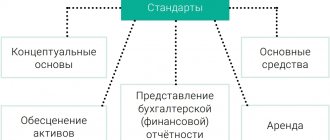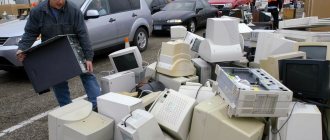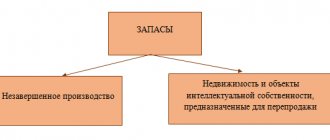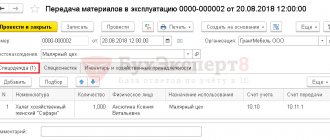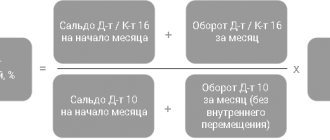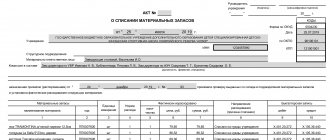The activities of any company are based on the use of material assets and production resources. And all these objects often await a period of their operation in warehouses. A special person in charge (most often a storekeeper) is responsible for their safety on site. But what happens after the designated goods are sent directly to their intended destination - they deteriorate, triple, or lose value for some objective reasons. And sometimes they are completely absent, although they are listed according to documents. To find out, just read our current review. We will analyze the methods, methods, and basis for writing off materials and inventories in accounting, why this procedure needs to be performed, and to which account everything should be written off. We will also look at the process itself in step-by-step instructions.
Techniques
The regulations for accounting of inventories approved by the Ministry of Finance introduce strict procedures that are generally followed. More precisely, these are three options, respectively, the same number of ways to get rid of the entries made in the documentation.
Values can be calculated based on:
- The cost of an individual unit of inventory. And it doesn’t matter in what specific form it is contained. The unit can be chosen arbitrarily, but for convenience it is usually divided into equal parts. By box, by weight (ton, kilogram), by piece products (one set). Thus, the company has the opportunity to eliminate the inventory at the purchase price, the cost of the actual purchase.
- Average cost. Perhaps the most popular method. After all, several groups of different valuables often go into a warehouse at once. And how to write off materials, the regulations for such a procedure with the calculation of each unit is a dubious idea. In fact, one cycle of the production process can require hundreds of different related products: coatings, catalysts, packaging, all kinds of lubricants, while at the same time disposable personal protective equipment, gloves, protective suits, and various equipment used during the procedure are consumed. Calculating the purchase price of each object and, based on this, calculating consumption is like scooping up the sea with a ladle. It is much easier to look at the total price for all lost resources and, based on this, form some kind of average cost.
- FIFO method. Recently it has become increasingly popular. And it should be noted that it is also effective. Although its use remains situational. In fact, the technique allows you to include all costs in the cost calculation. For resources that were purchased at the initial stages of the cycle, processed long ago, removed from the list, as well as for the services provided by third-party companies that were necessary in the production cycle. And the work expended by employees of their own company, based on their wages, which they will receive during the period of participation in the cycle or in a practical way. Many experts are confident that this method is the standard for how to correctly write off materials in accounting and consumables in production. But it cannot be denied that this is a resource-intensive method that wastes a lot of time on the part of those responsible for preparing the documentation.
As a result, we see that each approach has a number of positive and negative aspects. And the organization, guided by its own needs, the number of positions of various resources spent during work, as well as the desired type of reporting, must decide which methodology will be more profitable in the current conditions. But at the same time, no one bothers you to combine several options at different stages. The main thing is to clearly understand when exactly to use this or that technique.
Do you want to implement Warehouse 15? Get all the necessary information from a specialist.
Thank you!
Thank you, your application has been accepted!
Accounting entries for write-off of materials
Inventories can be written off as costs of main, auxiliary production, selling expenses, etc. Most often, the write-off of materials is reflected in the following accounting entries:
- Dt 20 “Main production” Kt 10 “Inventories” - materials are written off as production costs;
- Dt 23 “Auxiliary production” Kt 10 “Inventories” - materials are written off as costs of repair and mechanical structural divisions of an economic entity;
- Dt 25 “Overall production expenses” Kt 10 “Inventories” - materials are written off as costs of servicing structural divisions of an economic entity;
- Dt 44 “Sales expenses” Kt 10 “Inventories” - packaging materials for packaging manufactured products are written off.
Rules for writing off materials in accounting with industry nuances
The Russian Federation has a huge number of enterprises from small businesses to large holdings. And a significant number of production and non-production areas. It is noteworthy that virtually every industry has its own small nuances that slightly change the general procedure. This means that the exclusion of objects from the list will be stored on the basis of different principles. Now we will focus on this aspect. But it is worth understanding that there are thousands of spheres in the country. Therefore, in our review we clearly do not need to divide them into the narrowest parts and go into deep specialization. We will go through the most broad and in-demand areas. Let's figure out how to properly write off materials in various industries.
Construction
The main nuance is considered to be the fact that a significant number of different resources are involved in the processes. Such as sand, cement, gravel, brick, cinder block, aerated concrete, crushed stone. The list goes on for a long time. As a result, accurate accounting must be maintained at all times. After all, calculations are not carried out on a monthly cycle. This means that you will have to take inventory. And based on the identified expenses, exclude resources from the general list in connection with the number of units spent (cubic meters, kilograms, tons, pieces).
There is one more aspect that distinguishes this type of write-off of materials in accounting and tax accounting, paperwork. You will need an unexpectedly large package of papers. More specifically:
- Comparison of the specified standard resource consumption and the actual one. And in the vast majority of cases there will be a difference.
- Estimates. There are two types of techniques used. The first is by event or its duration. And the second - specifically for the object, after its delivery to the customer or contractor.
- Reports from local responsible persons. Often this means documents submitted by foremen or a single package that is compiled by the head of the entire site, based on cumulative reports.
- Standards set by management at the facility. That is, a certain resource consumption that is regulated on the site.
- Object logs.
The list, as you can see, is quite massive. And this is perhaps the central feature of the entire sphere. Indeed, during construction, when consumable resources are often simply piled up on the site (sand, crushed stone), it is very important to conduct a complete analysis of product care. Otherwise, uncontrollable shortages will constantly appear.
Agriculture
There are also plenty of documentary reports in this area. Among them:
- Act of consumption of planting seeds.
- Feed list.
- Livestock disposal act.
And what’s noteworthy is that in the industry, for every unaccounted item, an exact justification is required. If an animal died, then it is necessary to understand the reasons, and if it was a disease, then an accurate diagnosis should be made, a veterinarian should be involved, and the threat of an epidemic should be analyzed. If this is some kind of injury, it is required to give a clear definition under what circumstances it was received. Determining the presence of the culprit. When this is an oversight of an employee, or his negligent attitude, then the expense is indicated in the form of debt of a particular employee or deduction of his bonuses and wages. That is, how materials are written off in accounting in the agricultural sector is a complex issue. And it is entirely based on rational spending.
Possible ways to value low-value items
What to do after drawing up the act After drawing up the act, written-off low-value and high-wear items are sent to scrap (to the closet or warehouse), and the act itself is transferred to the company’s accounting department for the final completion of the write-off procedure.
Despite the fact that such objects are not considered fixed assets, they have a certain service life, after which the company can no longer operate them. In such a situation, it becomes necessary to write off these property items.
It is usually assumed that after release the materials will be used immediately for their intended purpose, and therefore the operation is accompanied by the postings that were already mentioned earlier.
Although small business enterprises are written off, they continue to be reflected in accounting (not in tax accounting) as part of industrial property. And at the enterprise, their movement must be constantly monitored to ensure safety. It is for the safety of the physical value that low value, even with zero value, is taken into account in the documentation. And this happens before it is completely worn out.
Why is it important to properly account for fuel and lubricants? Expenses for fuels and lubricants reduce the base from which income tax is calculated. In order for the tax amount to be calculated correctly: neither overestimated nor underestimated, you need to correctly calculate the norms by which fuel and lubricants will be written off.
So, what does fixed assets mean in accounting in 2020? Let's look at the key points. First of all, we will determine from what amount the organization’s property is considered a fixed asset.
Cost limits have been adjusted. Now, fixed assets subject to immediate write-off on the balance sheet should include objects that cost 10,000 rubles or less. Let us recall that until 2021, fixed assets with a value of up to 3,000.00 rubles were recognized as such property.
Valuation of unusable resources
Of course, such a situation is not at all uncommon. In no production facility is there a 100% guarantee that human errors or machine malfunctions will not lead to waste. And here two factors become important. The first is whether a particular employee or group of employees was to blame for such a result. And also whether the indicated loss falls within the normal limit or is already beyond it.
If all losses are within acceptable limits, then even if someone is at fault, the account will be production. But it will become personal if the guilt of the employees is obvious, and the expense has gone beyond the regulated norm.
How materials are written off in accounting, drawing up an order and a sample
The first stage of the procedure is the order. It is authorized to be issued by the director, manager, or the person replacing him and acting. The first point of the order is the creation of a commission. In principle, we understand that the main task will be to identify shortcomings. This means that an inventory will be needed. It is clear that even for a routine inspection it is always necessary to appoint a full commission. Where there will be both representatives of the accounting department and responsible persons, for example, a storekeeper or someone who receives products and is personally responsible for its safety.
The question often arises of how to write off consumables in production that are not available, and whether it is possible to immediately proceed to document processing. That’s the simple answer; in fact, this procedure should always be preceded by an inventory. And the initiative that appears in the form of an order has a standard or atypical version. The first option is when the work regulations are already assigned in advance in the form of a separate document. And the second - in cases where the order itself contains the entire regulation. This is an inconvenient form, so often everyone uses the first one.
To make the process of inventory, checks, and exclusion of a resource from the list of available ones easier, you will need software of the appropriate level. And the Cleverence software can help with this issue. This:
- Simplifying the inventory procedure, you only need one smartphone.
- Combining reporting, write-offs and inventory itself into a single system, which is again controlled from one device. Significant savings of time and effort.
- The ability to install both packaged software and individual software developed specifically for the needs and specifics of a particular company.
- Mobile applications that integrate into the general reporting system, for example, Bitrix.
- Solutions in accordance with all the latest amendments to Russian legislation.
- Current support. If the law changes, applications immediately adapt to it through updates.
Now let's figure out what should always be in a standard order. Without which points it simply will not be such:
- Full name of the enterprise.
- Date and serial number of a specific order.
- The purpose of the enterprise.
- Composition of the commission.
- Manager's signature.
Write-off of material assets for other reasons
Write-off of valuables due to the impossibility of their further use can occur:
- Due to the appearance of defects, detection of defects, breakdown, loss of original qualities and properties.
- Due to expiration of service life.
- For other reasons (obsolescence, excessive costs of maintaining valuables, etc.).
Let's tell you more about each group.
Group 1
Examples of reasons from the first group why material values become unsuitable for further use:
- exposure to aggressive environments during operation (metal corrosion / swelling of wooden surfaces due to high humidity, cracking of housings due to vibration loads, etc.);
- natural environmental processes (fading of surfaces from sunlight, abrasion of furniture upholstery during operation, etc.);
- improper operation (errors when cutting fabric or trimming the workpiece, the use of non-standard processing modes, etc.);
- force majeure (loss of original properties after a fire, flood, hurricane);
- hidden manufacturing defect (breakage that occurs before the end of the object’s service life due to manufacturers’ shortcomings).
This group is characterized by its unpredictability - it is impossible to predict a fire or the moment when a manufacturing defect occurs. Therefore, financially responsible persons and accounting specialists are faced with the task of timely writing off material assets that have become unusable from accounting accounts. The continuity of the technological process depends on the speed of purchasing new batches of materials, and timely documented write-offs increase the reliability of information in reporting (about the cost of enterprise property and technological losses).
Group 2
Subscribe to our newsletter
Yandex.Zen VKontakte Telegram
We have included in a separate group the reason for writing off valuables as expiration of service life.
This reason is more predictable in terms of duration - each type of material asset has its own permissible service life, established by the manufacturer. It can be calculated in days (for example, for food products), months or in years (for example, metal blanks, polyethylene pipes, wooden blocks, etc.).
The peculiarity of this reason is that the object, after its service life has expired, is still capable of being used further for its intended purpose. However, the user should not forget that:
- individual materiel values must be disposed of without fail at the end of their service life;
- Expired materials may affect the quality of the finished product and/or be unsafe to use.
Therefore, it is important to write off expired materiel in a timely manner, caring primarily not about material savings, but about the life and health of people in contact with such property, and the harm caused to the environment.
Group 3
Recently, the write-off of valuables for reasons from this group is quite common. This is due to technological progress and innovative technologies.
The rate of emergence of new technologies and progressive materials is increasing every year, therefore the rate of replacement of materials with new and modern ones is also increasing.
Potential threats to business success in the form of obsolescence of material values lurk at every step. For example, out-of-date office interiors can alienate some potential clients from the company. And the use of outdated materials in the manufacture of products will deprive of competitive advantages and lead to the loss of buyers and customers.
The basis for writing off material assets in the cases considered is also the write-off act (see below for details).
The procedure for decommissioning materials, postings and documents
This procedure is a rigorous process. Order, inspection, reporting. And the last point often raises a lot of questions. And in vain, because this is a common operation with its own nuances.
The first of them is that the set of inventories is credited, that is, 10. In all cases, no matter what part of the operation is involved. But expense accounts are debited by their number.
We get this form:
| Debit part | Credit part (always identical number) | Explanations |
| 20 | 10 | Cost write-off in favor of main production |
| 23 | 10 | Analysis and assessment of resource for auxiliary production processes |
| 94 | 10 | Write-off in case of loss. This includes damage, theft, exceeding the service life, initial defects, breakdown during the production process and similar |
| 99 | 10 | This category includes resources damaged by natural disasters. |
| 91.2 | 10 | All products that were sold under a gratuitous contract. That is, often gifts are for marketing purposes or as a result of charity events |
Act of write-off of inventories
This is the only way to exclude inventories from the list of active ones when stored in warehouses. It is noteworthy that since 2015, this, in principle, allows the use of any calculation and analysis option: by piece cost or by total cost. In this case, a document is always drawn up in form 0504230.
It consists of two parts. The header contains basic information, order number, date, composition of the commission, full name. leader. The main part, in the form of a table, provides information on the actual loss of inventories. Contains graphs of expenses expected according to the norm, the reasons for such an outcome. In fact, this act is the only legal way to properly write off materials from the warehouse.
Do you want to implement “Store 15”? Get all the necessary information from a specialist.
Thank you!
Thank you, your application has been accepted.
Material write-off act: right or obligation
In accordance with paragraph 1 of Article 9 of the Federal Law of December 6, 2011 No. 402-FZ “On Accounting”: “Every fact of economic life is subject to registration as a primary accounting document.” The act of writing off materials is such a primary accounting document and is used to confirm the fact of consumption of material reserves.
Current questions: is it possible to write off materials (for example, office supplies) for current and other needs, without a write-off act, and whether the formation of a write-off act is the right or obligation of a business entity.
From the literal interpretation of the guidelines for accounting of inventories (MPI), approved. By order of the Ministry of Finance of Russia dated December 28, 2001 No. 119n, it follows that an act must be drawn up if the document for the release of materials from the warehouse does not indicate the purpose of the write-off (clause 98 of the Methodological Instructions).
At the same time, materials from inspections of the activities of organizations confirm that the formation of an act is mandatory. As an example, we can cite the materials posted on the official information portal of the Municipal District “Anabar National (Dolgan-Evenki) Ulus (District)” (Head’s Report for 2015).
Let us add that the act of writing off materials is also documentary evidence of expenses for profit tax purposes (clauses 1, 2 of Article 272 of the Tax Code of the Russian Federation).
According to the Methodological Instructions, the specific procedure for drawing up a materials consumption report is established by the organization. The expense report indicates the name, quantity, accounting price and amount for each name of actually consumed materials, the name of the product for the manufacture of which they were used, or the name of the costs. In practice, some business entities draw up a document on the write-off of materials once a month.
The 1C:Accounting 8 program implements a more careful approach - drawing up an act for each fact of writing off materials.
The fact is that specialists from regulatory agencies do not always agree with monthly frequency, and companies often have to defend the legality of this approach in court. Despite the existence of positive judicial practice (see, for example, Resolution of the Federal Antimonopoly Service of the Moscow District dated September 13, 2004 No. KA-A40/8081-04), sometimes it is better to use an approach that avoids litigation.
What to do if there is a balance
In principle, it is permissible to create a separate sub-account where all excesses are indicated. But this is an optional procedure. Just a way to make your work easier and make your accounting more transparent. But the aspect has nothing to do with the issue under discussion. Since it is strictly prohibited to enter this information into act 0504230, even with reverse values.
Let's sum it up
In fact, the write-off of inventory and materials in tax accounting and accounting has no differences.
If we are talking about white accounting, which does not try to mislead the competent authorities. And it is worth remembering that although the law does not put forward actual rules on the procedure, and a lot remains at the discretion of the manager, the final reporting will be significant documents for the Federal Tax Service. Which they can check at any time. Therefore, it is worth approaching the procedure with all responsibility. At the same time, it is also undesirable to refuse such events or minimize them. Otherwise, accounting will turn into a tangled mess, and expenses will “mysteriously” increase. Number of impressions: 1460
